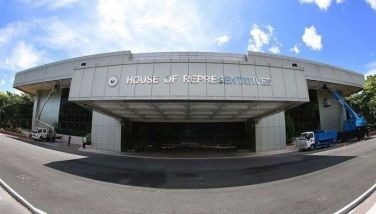BSP sweetens perks for rural bank mergers, consolidations
MANILA, Philippines - The Bangko Sentral ng Pilipinas (BSP) plans to sweeten its P5 billion incentive package aimed at enticing rural banks to consolidate and merge to create a stronger rural banking industry that would help in the economic development in the countryside.
In an interview with reporters, BSP Deputy Governor Nestor Espenilla Jr. said the bank regulator is reviewing the incentives available under the Strengthening Program for Rural Banks (SPRB) to make it more attractive to rural banks by offering incentives available under the recently launched Strengthening Program for Cooperative Banks (SPCB).
“We are reviewing the SPRB and we may enhance it to make its incentive parallel to that of SPCB,” Espenilla said.
The SPRB was launched in late 2009 wherein the BSP and the state-run Philippine Deposit Insurance Corp. (PDIC) established a P5-billion incentive package to rescue ailing and at the same time encourage consolidation among major players.
The SPCB was launched recently by PDIC and Land Bank of the Philippines to reduce the number of cooperative banks to less than 10.
Under the SPRB, the BSP and PDIC agreed to contribute P2.5 billion each to a fund that would be used to extend financial assistance to qualified investors through a combination of subscription to preferred shares, to provide additional capital to reinforce the capital position of the strategic third party investor and as direct loans. It was aimed at promoting the merger, consolidation and acquisition between or among eligible strategic third party investors and eligible rural banks to create a stronger rural banking system that can more effectively serve the countryside.
On the other hand, the SPCB, scheduled to lapse in August this year, encourages mergers, consolidations with or acquisitions of cooperative banks, particularly those that are capital deficient, by eligible strategic third party investors (STPIs) under a specific set of guidelines.
Under the program, PDIC and Landbank would provide the critical support component through a financial assistance. Equity would be infused by the PDIC and Landbank into the STPIs to neutralize the potential adverse impact of asset write-downs that are essential to clean up the books and ensure that surviving banks are strong and capable.
On the other hand, the BSP would provide complementary regulatory support package to further enable the surviving banks to expand their operations. The regulatory support package includes flexibility in the opening, conversion and relocation of bank offices, including head offices, flexibility in ownership limits, more liberal guidelines that would allow staggered booking of required valuation reserves, waiver of penalties as may be appropriate, and the restructuring of existing rediscounting and emergency loans with the BSP.
Through the SPCB, surviving cooperative banks or banks at least 67 percent owned by cooperatives are expected to have a much improved capital position with a networth of at least P100 million and a minimum risk-based capital adequacy ratio (RBCAR) of 15 percent.
Espenilla said there is a need to enhance the incentive package under the SPRB as not a single rural bank has availed of the program since it was launched late in 2009.
Furthermore, he said, Landbank might be interested in joining the SPRB as it participated in the SPCB.
“Under the SPCB, there is a cleanup of negative capital cleanup through (capital) infusion by PDIC and BSP support (in terms of regulatory relief). Then Landbank and white knight come in (by infusing equity shares), so the end result is a strong bank. On the other hand, under SPRB, white knight shares one half of the burden (the other half is PDIC financial support and BSP regulatory relief), and Land Bank is not in the picture,” Espenilla explained.
BSP Governor Amando Tetangco Jr. said earlier that the local banking industry grew as deposit levels jumped 41 percent to P5.16 trillion as of end-June this year from P3.66 trillion at end-2007 while other markets were shrinking.
“This reflects savers’ inherent faith in our banking industry, giving banks the responsibility to safekeep hard-earned surplus funds.
He pointed out that the local banking industry is strong enough to survive external shocks based on the stress tests conducted by the BSP.
“Our recent stress test results show that for the 55 universal, commercial and thrift banks tested, their aggregate balance sheet shows a remarkable ability to absorb extreme values of risk,” he said.
According to him, the capital adequacy ratio (CAR) of the 55 banks remained significantly higher than regulatory requirements despite write offs of as large as 50 percent, 500 basis point increase on local and foreign interest rates, as well as a 30 percent depreciation of the peso against the US dollar.
The BSP chief is confident that the Philippine banking system would be able to keep abreast in an increasingly uncertain market.
- Latest
- Trending





























